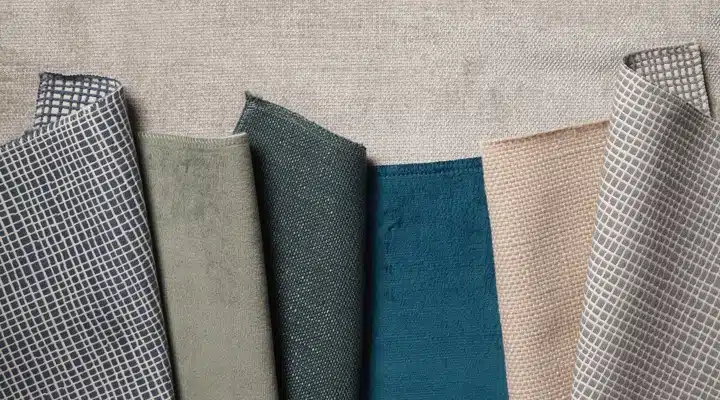What separates cotton from silk from polyester from acrylic? The answer is the – ahem – fiber of the issue – the fabric fibers
When you’re new to custom furniture, it can be exciting to imagine your grand vision for a space without restriction. But when it comes down to details, the process sometimes turns overwhelming. This is why you bring in an expert like RFP, we sweat the details so you don’t have to on fabric fibers.
For example, our customers – on average – don’t come in knowing the ins and outs of fabric fibers. They may know the general types of textiles and what they’re looking for, but it’s also important to get down to the microscopic level when choosing materials. Here’s a quick primer of what we’re talking about.
- Cotton: These fabric fibers are natural, grown from cotton seeds in a round form called a boll, which are picked and spun into thread. Cotton is one of the most popular fabric fibers in the world – they’re comfortable, breathable, and inexpensive. However, though they take well to dye, they will fade in colour over time.
- Linen: Also known as flax, linen fibers are taken from inside the stalk of the flax plant – so like cotton, they are natural fabrics. Linen is a classic material, easy to dye, and very strong – and its light weight make it great for summer use. However, linen will stain and fade, so should be used for items that won’t receive heavy use.
- Wool: Wool fibers are made when hair is shorn from an animal – most commonly sheep but can also include rabbits, goats, alpacas and more – and spun into materials like thread, felt or batting for quilts or insulation. Depending on the type, wool can be very fine or very coarse – wool that’s appropriate for furniture textiles, like tweed, have a luxurious texture and feel, and though it’s very absorbent, it can be treated to improve its stain resistance. However, some people may have an allergy to wool fibers.
- Silk: Another natural fiber, silk comes from the silkworm as it builds a cocoon. The shimmery result, as we all know, is famously soft and rich, and in fact the strongest natural fabric though it remains breathable and light. But the processing of silk into different variants is extensive, so it’s also one of the most expensive fabrics to get.
- Rayon/Viscose rayon: Rayon is the first synthetic (or, technically, semi-synthetic) fabric ever made, created commonly from wood pulp with the help of a chemical process. It’s extremely versatile, and is often blended with other fabrics to add extra softness. That being said, rayon would be difficult to use on its own due to its lack of durability.
- Polyester: Comprising the most common synthetic fabric, polyester fibers are created from a chemical reaction between coal, petroleum, air and water. Polyester became well-known for its low-maintenance qualities, resistance to wrinkling and losing its shape, and its quick-drying nature. However, polyester is also known for being prone to pilling or abrasion if not high enough quality.
- Nylon: Think of stockings and yoga wear when you think about nylon, a synthetic fabric made from polymers. Nylon fibers are excellent to hold up against abrasion, movement, and stains – but the fabric may pile or bubble over time.
- Acrylic: This synthetic fabric is made from fibers that commonly recreate the look and feel of wool or cotton. Known as a “workhorse” fabric, acrylic fibers will hold up after heavy use, retain their colour, and wick away stains.

